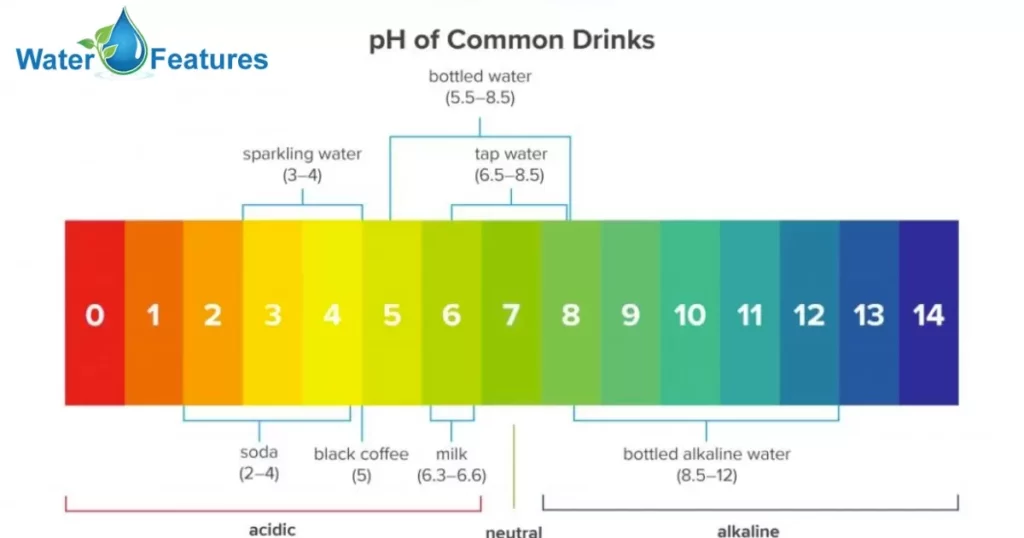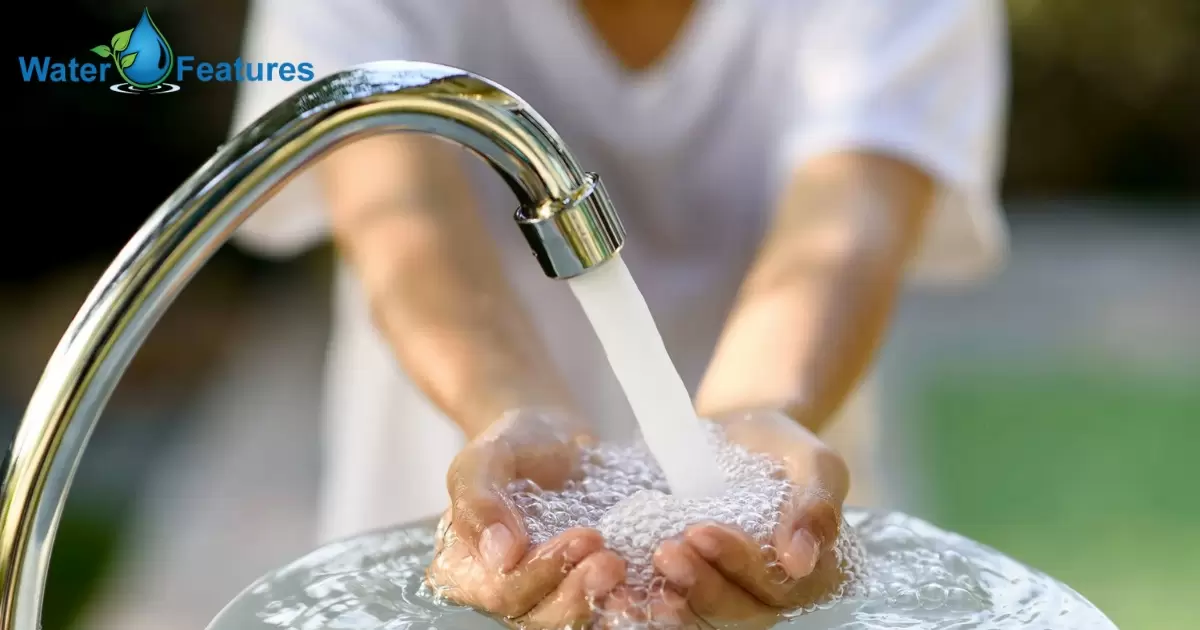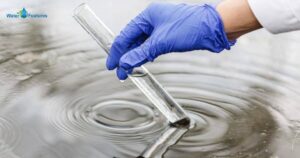Ammonia, chemically represented as NH3, is a colorless gas with a pungent odor. It is a naturally occurring compound found in various environments, and it has a range of industrial and household applications. While ammonia itself is not necessarily harmful, its presence in tap water can raise concerns due to potential health effects. Understanding the sources and safe levels of ammonia in drinking water is crucial for ensuring its quality.
Imagine the water that flows from your tap, the very water you use for drinking and cooking, potentially containing ammonia. The implications are significant, and in the following paragraphs, we’ll explore the reasons why this matters to you and your family. Does Tap Water Have Ammonia? The answer might surprise you. Imagine the water that flows from your tap, the very water you use for drinking and cooking, potentially containing ammonia.
While ammonia is a common substance, its introduction into tap water can occur through various routes, such as agricultural runoff, wastewater discharge, and even water treatment processes. The presence of ammonia in tap water is regulated to ensure safe levels for consumption, but awareness and vigilance on this matter are essential for safeguarding public health. In the following sections, we will examine the sources of ammonia in tap water, how water treatment facilities manage it, and what you can do to protect your family from potential exposure.
What is Ammonia?
Ammonia is a colorless gas with a pungent odor, consisting of one nitrogen atom and three hydrogen atoms (NH3). It’s a naturally occurring compound found in the environment and has various industrial and household uses. Ammonia is highly soluble in water, which makes it a potential contaminant in tap water.
What Causes High Ammonia Levels in Water?
High ammonia levels in water can be attributed to several factors.
Agricultural Runoff: Fertilizers containing ammonia compounds can leach into water sources through runoff, elevating ammonia levels.
Wastewater Discharge: Municipal and industrial wastewater often contain ammonia from household cleaners and industrial processes.
Biological Processes: Ammonia can form as a byproduct of natural processes, such as the decay of organic matter in water bodies.
Chloramination: Water treatment facilities may use chloramine, a disinfectant that contains ammonia, which can result in ammonia presence in tap water.
Safe Levels of Ammonia in Drinking Water

The Environmental Protection Agency (EPA) in the United States sets the Maximum Contaminant Level (MCL) for ammonia in drinking water at 1.0 milligrams per liter (mg/L) or 1 part per million (ppm, while tap water does not remove fluoride). This standard is designed to protect public health by minimizing exposure to ammonia in tap water. Ammonia can infiltrate your tap water through various routes.
Natural Sources: As mentioned earlier, ammonia can naturally occur in water bodies due to organic decomposition.
Water Treatment Practices: Some water treatment facilities use chlorination, a process that combines chlorine and ammonia, to disinfect water. While this process kills harmful microorganisms, it can lead to the presence of ammonia in the treated water.
Agricultural Activities: Runoff from farms where ammonia-based fertilizers are used can introduce ammonia into water sources.
Industrial Effluents: Industries that produce ammonia as a byproduct may release it into nearby water bodies.
Do Water Treatment Facilities Monitor Levels of Ammonia in Drinking Water?
Water treatment facilities are required to monitor and regulate the levels of various contaminants, including ammonia. They typically use a combination of methods, such as chemical testing and online monitoring, to ensure that the ammonia concentration in tap water remains within safe limits as per regulatory standards.
By maintaining strict oversight, water treatment facilities aim to keep ammonia levels well within the safe limits defined by regulatory standards, ensuring that the tap water you use is of the highest quality.
This monitoring process is crucial because it allows water treatment professionals to take prompt action in the event of elevated ammonia levels, such as adjusting treatment methods to ensure safe drinking water for the community. The dedication of these facilities to continuous water quality control plays a pivotal role in providing consumers with access to clean and safe tap water.
How Can I Tell if Ammonia is in My Drinking Water?
If you’re concerned about the presence of ammonia in your tap water, there are a few ways to detect it.
Odor: Ammonia has a distinct, pungent odor. If your tap water smells like cleaning products or has a strong chemical odor, it may contain ammonia.
Water Testing Kits: Home water testing kits are available in the market. These kits can help you measure ammonia levels in your tap water.
Water Quality Reports: Your local water utility provider is required to provide annual water quality reports. These reports typically include information about the presence of various contaminants, including ammonia.
How Can I Protect My Family from Ammonia in Drinking Water?
To ensure your family’s safety and minimize ammonia exposure through tap water, consider these precautions.
Use a Water Filter: Install a water filtration system that is certified to remove ammonia. Look for filters with activated carbon or reverse osmosis technology.
Regularly Maintain Water Systems: Ensure your plumbing and water fixtures are well-maintained to prevent contamination.
Stay Informed: Keep track of your local water quality reports and any alerts or advisories issued by your water utility provider.
Contact Authorities: If you suspect high ammonia levels or water quality issues, contact your local water utility or environmental protection agency for guidance.
How Else Can I Be Exposed to Ammonia?
Ammonia exposure is not limited to tap water. It can occur through various other means, such as.
Cleaning Products: Household cleaning products like ammonia-based glass cleaners can release ammonia fumes, leading to inhalation exposure.
Industrial Environments: Those working in industries that use or produce ammonia may be at risk of inhalation or dermal exposure.
Agricultural Activities: Individuals involved in farming or working with ammonia-based fertilizers may face ammonia exposure.
Swimming Pools: Some swimming pools use chloramines, which can produce ammonia compounds. Swimmers may be exposed to ammonia in pool water.
My Tap Water Has Ammonia In It, How Do I Deal With This?
If you discover that your tap water contains ammonia, take these steps to address the issue
Contact Your Water Utility Provider: Inform your local water utility provider about the presence of ammonia in your tap water. They can provide guidance and may take corrective actions.
Use Water Filtration: Install a certified water filtration system that can effectively remove ammonia from your tap water.
Boiling Water: Boiling tap water can eliminate some volatile contaminants, including ammonia. This method may not remove all ammonia, and it’s not a long-term solution.
Consider an Alternative Water Source: If the ammonia levels are consistently high and pose health risks, consider using an alternative source of water, such as bottled water, until the issue is resolved.
What Are the Potential Health Effects of Ammonia?
| Health Effects of Ammonia Exposure | Symptoms |
| Respiratory Issues | Coughing – Shortness of breath – Chest discomfort |
| Eye and Skin Irritation | Redness – Itching – Burning sensations |
| Digestive Distress | Stomach discomfort – Nausea – Vomiting |
| Long-Term Effects | Lung damage (from chronic inhalation) – Potential organ damage (from chronic exposure) |
Harmful Effects of Ammonia in Water
The presence of ammonia in drinking water can have a range of harmful effects.
Elevated Health Risks: High levels of ammonia in tap water can pose health risks, particularly to vulnerable populations such as infants, the elderly, and individuals with preexisting health conditions.
Altered Taste and Odor: Even at low concentrations, ammonia in water can alter its taste and odor, making it less pleasant to consume.
Corrosion: Ammonia can contribute to corrosion in plumbing systems, which can lead to water quality issues and costly repairs.
Environmental Impact: Excessive ammonia in water bodies can harm aquatic ecosystems, affecting fish and other aquatic life.
Free Ammonia in Drinking Water

Free ammonia, is a term that directly addresses the question, Does Tap Water Have Ammonia? refers to the unbound, dissolved ammonia molecules in water. It is a critical parameter to consider when assessing the potential health risks associated with ammonia in tap water. Water treatment facilities often monitor and control free ammonia levels to ensure compliance with water quality standards, guaranteeing that your tap water remains safe and ammonia-free for consumption.
Effects of Ammonia on the Body
Understanding how ammonia affects the body is crucial for assessing potential health risks.
Respiratory System: Ammonia inhalation can irritate the respiratory system, leading to coughing, wheezing, and, in severe cases, lung damage.
Eyes and Skin: Contact with ammonia can cause immediate irritation, including redness, itching, and even chemical burns.
Digestive Tract: Swallowing water with elevated ammonia levels can result in stomach discomfort, nausea, and vomiting.
Long-Term Health Effects: Chronic exposure to ammonia may lead to more severe health issues, including liver and kidney damage, which can be irreversible.
FAQ’s
How often should I test ammonia levels in my aquarium?
Regular testing is essential. Test ammonia levels weekly in a new aquarium, and less frequently once the tank is established.
What are the best ways to lower ammonia in my aquarium?
Reduce ammonia through water changes, biological filtration, and ensuring you don’t overfeed your fish.
Can ammonia harm my fish?
Yes, high ammonia levels are toxic to fish, causing stress, illness, and even death.
Conclusion
The presence of ammonia in tap water is a matter of significance, as it can impact both the safety of your drinking water and your overall health. Understanding the sources and potential health effects of ammonia is essential in ensuring the well-being of you and your family. By staying informed, using water filtration systems, and actively monitoring water quality, you can take proactive steps to mitigate the risks associated with ammonia in tap water.
Aquarium enthusiasts, managing ammonia levels in aquarium water is crucial to maintaining a healthy aquatic environment. Regular testing, appropriate filtration, and responsible fish care are essential practices to prevent harm to your aquatic pets. Whether in tap water or aquariums, knowledge, and vigilance are the keys to safeguarding against the potential adverse effects of ammonia.











